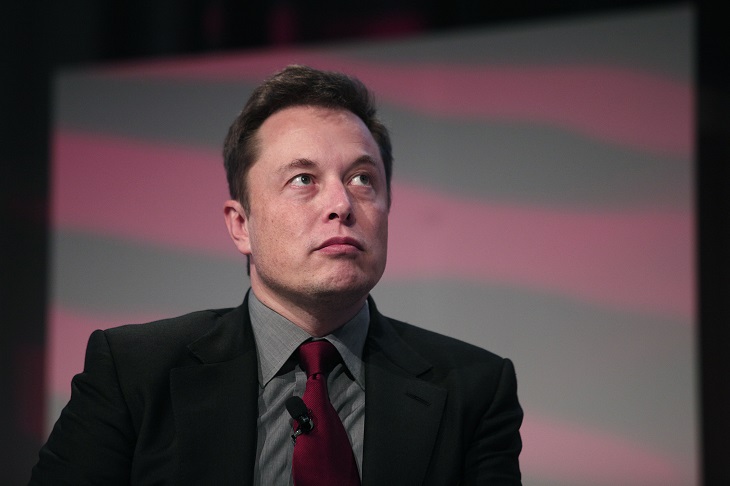The US Food and Drug Administration has granted Elon Musk’s company Neuralink approval to begin human trials on brain chips.
Twitter and SpaceX’s billionaire owner took to social media this week to congratulate Neuralink on the news. The company has been striving for this moment for six years, but the FDA issued some warnings that Neuralink will have to address ongoing concerns, including the safety of the lithium batteries contained within the device.
Not everyone is thrilled with the development. Brain chips feel like a cross-roads moment for humanity, a point where the floodgates could open to a whole stack of unintended consequences. While it would be easy to chalk this technological advancement up to the run-away dystopian transhuman technology promoted by the likes of the World Economic Forum, there are complexities to brain chip technology worth considering.
Suspicion is not purely the fault of the public, considering future implications were listed as ‘web browsing and telepathy’, not to mention that as far as we can tell, Elon Musk is a transhumanist. There is a thin line between wanting technology to assist with solving human medical conditions and the desire to integrate into healthy humans to artificially expand their capabilities. Musk appears to fall somewhere between these two things.
The outcomes of medical advancement and transhumanism are superficially similar but ethically very different. Consider a person with robotic legs. If that person is the victim of a terrible accident, the medical intervention is not transhumanism but, if a person cut their legs off to install a robotic replacement – that is transhumanism. They look the same, but those individuals took a very different path. The question transhumanism asks is, ‘Does this matter?’
Back in the real world, it appears the Neuralink technology may have a function closer to medical devices such as pacemakers.
As Musk explained, the purpose of the brain chip is to assist people with a wide range of medical conditions, promising to offer hope to those suffering from autism, insomnia, memory and hearing loss, depression, obesity, and serious mental conditions that have so far stumped the medical profession (like schizophrenia).
‘This is a result of incredible work by the Neuralink team in close collaboration with the FDA and represents an important first step that will one day allow our technology to help many people,’ tweeted the company.
The safety of these human trials will be watched closely, as animal trials were less than ideal.
In February 2022, the Economic Times reported that the Neuralink brain chip test ‘killed 15 monkeys out of 23’ with the company accused of causing ‘extreme suffering’. Neuralink said that only 8 animals were euthanised.
As reported:
‘An animal-rights group, Physicians Committee for Responsible Medicine, has submitted an official complaint with the US Department of Agriculture on Thursday where they have claimed that monkeys experienced “extreme suffering as a result to inadequate animal care and the highly invasive experimental head implants during the experiments,” Business Insider reported.’
One of these monkeys was featured on a YouTube video playing ‘Pong’ – one of the world’s original video games. This was during a trial of the bluetooth chips where it was said the monkeys were playing the game using only their minds with the chips pre-empting arm movements via monitored brainwaves.
‘The company said this was achieved after the Neuralink chip fed the information from the monkey’s neurons into a decoder, which was then used to predict Pager’s intended hand movements – allowing the output from the decoder to be used to move the cursor, instead of Pager manipulating the joystick.’
In 2020, Musk had referred to the project by saying, ‘I think it’s going to blow your minds. It’s like a Fitbit in your skull with tiny wires.’
During this time, the company featured a pig with the implant monitoring the animal’s brain activity. ‘The beeps you are hearing are real-time signals. The future’s going to be weird,’ said Musk.
‘I want to be clear,’ Musk added. ‘We’re working closely with the FDA. We’ll be extremely rigorous. We’ll significantly exceed the FDA guidelines for safety. We will make this as safe as possible.’
This was before the monkeys died.
Neuralink has maintained their ongoing commitment to animal welfare standards, countering that:
‘Neuralink said, “The use of every animal was extensively planned and considered to balance scientific discovery with the ethical use of animals.” In reference to the claims of euthanasia by the Physicians Committee, Neuralink stated that “two animals were euthanized at planned end dates to gather important histological data, and six animals were euthanized at the medical advice of the veterinary staff at UC Davis.”’
It’s perfectly understandable why Elon Musk would be chasing medical solutions to some of humanity’s enduring and cruel brain conditions which modern medicine has failed to address. What is bizarre though – and to be fair, could be little more than publicity drama – are claims that these brain chips could make ‘language obsolete in 5-10 years’.
‘I think you would, in principle, you would be able to communicate very quickly and with far more precision… language, I’m not sure what would happen to language but in a situation like this though, it’d be kind of like the matrix. You want to speak a different language, no problem. Just download the program.’
The device, about the size of a small coin, includes 3,000 electrodes which are attached to flexible cords thinner than a human hair. Their purpose is to monitor brain activity. Unfortunately, human brains remain somewhat of a mystery, with most of our knowledge comprised of generalities and guess-work rather than a detailed understanding.
Speaking in 2020, Ari Benjamin of the University of Pennsylvania highlighted this problem, telling BBC News:
‘Once they have the recordings, Neuralink will need to decode them and will someday hit the barrier that is our lack of basic understanding of how the brain works, no matter how many neurons they record from. Decoding goals and movement plans is hard when you don’t understand the neural code in which those things are communicated.’
Let us return to the conversation of transhumanism. If Musk’s technology is used purely to assist with medical conditions, we may celebrate it in the same way we praised the invention of the cochlear hearing device that restored hearing to so many.
However, if Musk embraces his previous discussions, such as those in Futurism – to see the brain act in symbiosis with AI and serve as an ‘upgrade’ to integrate wirelessly with technology – we would be well within the bounds of the ethically dubious transhumanist world.
Regardless of Musk’s fascination for technology and good intentions, what would an authoritarian government do if it could read the brainwaves of citizens remotely? It’s already bad enough that you get door-knocked by police for liking the wrong Facebook post. Would Musk’s technology inadvertently create a future where people get arrested for literal wrong-think?
Good intentions can be the most dangerous thing in the world. Musk is a man that quite rightly champions free speech, but his technology could easily be commandeered by the worst dictators on the planet to end no only freedom of speech, but freedom of thought where there would be nowhere for a citizen to hide from their government, not even within their mind.
At some point those creating our future should stop asking, ‘Can I do this?’ and instead ask, ‘Should I do this…’ To this I add a second rule. When creating anything, be it a law or a piece of technology, the first question we should ask is, ‘What would Kim Jong-un do?’
Got something to add? Join the discussion and comment below.
Get 10 issues for just $10
Subscribe to The Spectator Australia today for the next 10 magazine issues, plus full online access, for just $10.


























Comments
Don't miss out
Join the conversation with other Spectator Australia readers. Subscribe to leave a comment.
SUBSCRIBEAlready a subscriber? Log in